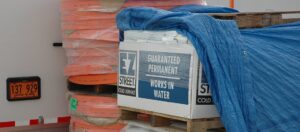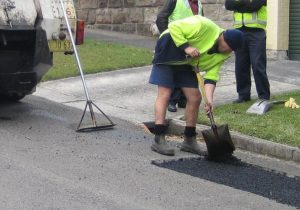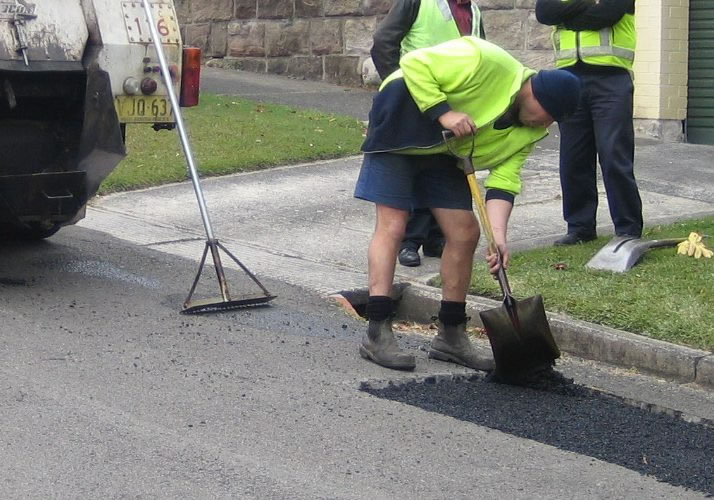Trenches are a routine part of underground utility work. But the work is not complete until the surface is safely and properly restored. Poor trench reinstatement leads to early pavement failure, safety risks, and added cost. For contractors and maintenance teams, getting it right the first time saves time, money, and reputation.
Using the right method and the right materials can help deliver strong, lasting results. EZ Street Ambient Asphalt offers a smart solution for trench restoration that meets performance and compliance needs without the delays linked to traditional options.
What Is Trench Reinstatement?
Trench reinstatement is the process of rebuilding the pavement surface after trenching. It involves compacting the backfill, rebuilding the base layers, and applying a final surface layer. The goal is to restore the road or footpath to a condition that matches or improves on the original.
Local councils and utility owners set the specifications for how reinstatement must be done. These can vary based on the road type, traffic load, and location.
Why Does Good Trench Restoration Matter?
Poor reinstatement creates long-term problems. Common issues include:
- Sinking or settlement of the trench
- Cracking along the trench edges
- Water ingress that weakens the base layers
- Complaints from the public
- Costly rework or fines for non-compliance
A well-finished trench makes roads safer and lasts longer. It also shows professionalism and protects your reputation with clients and authorities.
The Trench Reinstatement Process
Every job may differ, but most trench reinstatement follows a standard sequence.
Step 1: Backfilling
Start with approved backfill material. This may include crushed rock, stabilised sand, or flowable fill. Compact each layer as you go. Skipping compaction leads to future settlement.
Step 2: Rebuilding the Base
Reinstate the sub-base and base layers to match the original structure. Road authorities usually set out the material type and thickness. Good compaction here is key for surface durability.
Step 3: Surface Reinstatement
This is the final step, where the asphalt layer is applied and compacted. Traditional hot mix requires heating, tight timeframes, and sometimes multiple visits. That creates delays and extra costs.
EZ Street Ambient Asphalt offers a better option. It is always workable, even in cold or wet conditions. It bonds well with existing surfaces and can be used straight from the bag or bulk delivery. This helps teams complete permanent reinstatements in one visit.

Benefits of Using EZ Street Ambient Asphalt
EZ Street Ambient Asphalt is engineered for real-world trench work. It offers:
- Long-term durability under traffic loads
- Workability in any weather
- No heating or special equipment needed
- Immediate trafficability
- Minimal waste
Contractors trust it because it performs consistently and helps avoid return trips.
Best Practices for Strong Reinstatement
To get the best result, follow these steps:
- Compact each layer of fill properly
- Saw-cut the trench edges for a clean join
- Use a tack coat between old and new surfaces
- Match or improve on the original pavement thickness
- Follow local council or utility authority specifications
Taking these steps ensures the finished trench stays intact, even under high traffic stress.

FAQs About Trench Reinstatement and Trench Restoration
What is trench reinstatement?
Trench reinstatement means restoring the road or pavement surface after trenching. This includes backfilling, compacting, and resurfacing to meet safety and structural standards.
What is the difference between trench reinstatement and trench restoration?
Reinstatement focuses on structural recovery and compliance. Restoration may also include improving the surface appearance or function. Both aim to return the surface to its original condition or better.
What are the types of trench reinstatement?
There are two main types:
- Temporary reinstatement, which makes the area safe for short-term use
- Permanent reinstatement, which is the full, final repair following specifications
What materials are used for trench reinstatement?
Common materials include:
- Approved backfill
- Crushed rock or stabilised sand for the base
- Asphalt for the final surface, such as EZ Street Ambient Asphalt
Who checks the quality of trench reinstatement?
Site supervisors, project managers, or local council inspectors often carry out checks. They verify compliance with compaction, thickness, and surface finish standards.
Can a trench be reinstated without compaction?
No. Compaction is essential. Without it, the trench may settle or fail, even if it looks good at first.
Why use EZ Street Ambient Asphalt for reinstatement?
EZ Street Ambient Asphalt allows you to complete high-quality, permanent reinstatement in one visit. It works in any weather, stays flexible during application, and handles heavy traffic once compacted. You can use the asphalt calculator to work out how much you need.












